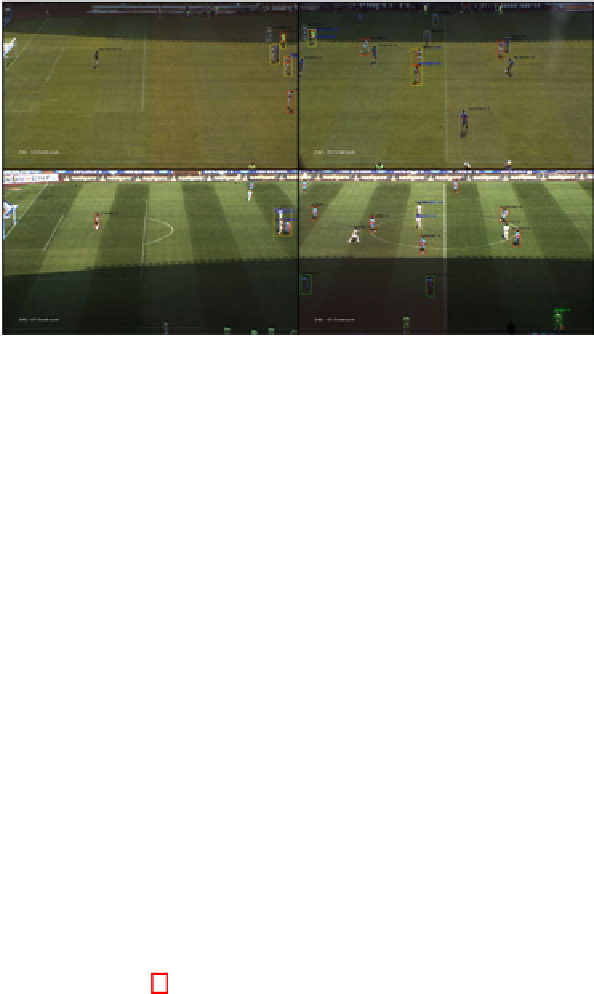Information Technology Reference
In-Depth Information
Fig. 3.
Example of 4 different cameras FOV with variable illumination conditions
been fixed to five according to our domain constraint, as previously remarked.
The values assumed for the thresholds and the other specific parameters will be
explicitly mentioned in the experiments section.
MBSAS:
it is a sequential algorithm; vectors are presented twice, the first time
for the representatives creation, and the second one for the assignment of all
vectors to classes; it is dependant from the presentation order; each cluster
is represented by a vector called prototype that can be updated at each
presentation in the test phase.
BCLS:
it is a competitive algorithm; representatives are randomly initialized;
vectors are presented twice, the first time for the representatives updat-
ing (only the winner representative is updating at each presentation), and
the second one for the assignment of all vectors to classes; it is dependant
from the presentation order, and from the initial position of representatives.
Again, each prototype can be updated at each presentation in the test phase.
Isodata
(or k-means): it is a hard-clustering algorithm; representatives are ran-
domly initialized; vectors are presented continuously until the representa-
tives remain unchanged; at each presentation representatives are updated in
function of the difference with the presented vector; it is dependant from
the initial position of representatives. Representatives can be continuously
updated in the test phase.
In the following section 6, we present results obtained by crossing the different
feature sets with the above mentioned unsupervised algorithms.
6 Experimental Results
We have tested the proposed algorithms with different sequences acquired during
real football matches of the Italian serie A championship, acquired in different

Search WWH ::

Custom Search